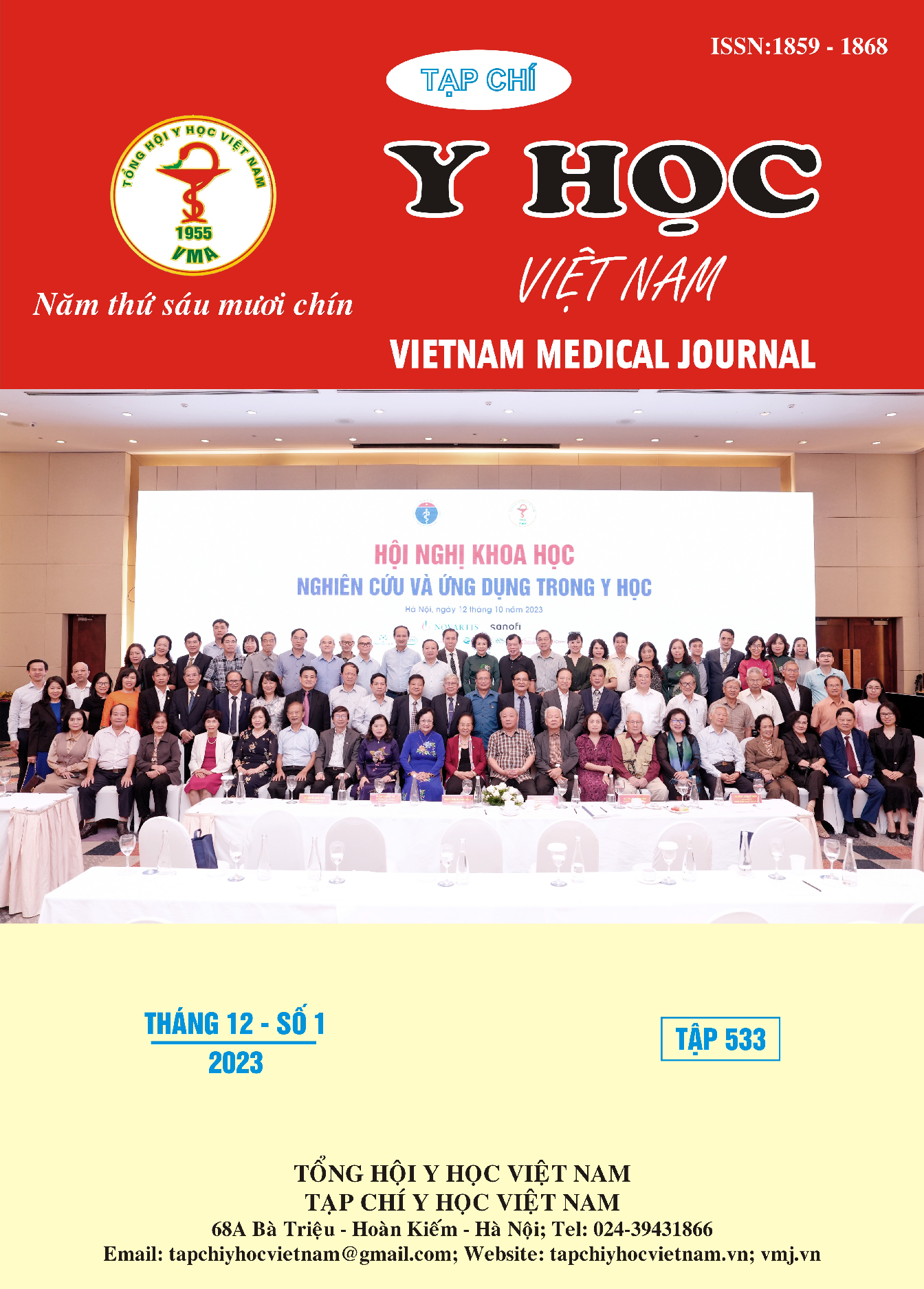COMPREHENSIVE EVALUATION OF TREATMENT AND MANAGEMENT FOR PATIENTS WITH GALLSTONES AT MILITARY CENTRAL HOSPITAL 108
Main Article Content
Abstract
Objective: To evaluate the characteristics of treatment methods and hospital outcomes of patients with gallstones. Methods: A retrospective study was conducted on 1165 patients with gallstones who received 1385 inpatient treatments at Military Hospital 108 from January 2021 to December 2022. The study aimed to analyze the proportion of treatment methods, the number of hospital admissions, the average hospital stay duration, and treatment outcomes of the patient group. Results: 53% of the patients were female, and 58.19% were over 60 years old. The average hospital stay duration for gallstone patients was 6.9 days, 5.94 days for internal medicine treatment, and 8.04 days for surgical treatment. Severe complications of gallstones included severe cholecystitis (15.74%) and septic shock (7.73%). There were 26 cases treated in the intensive care unit, with an average treatment duration of 4.21 days. Among the 1165 patients, 85% were admitted for treatment only once, and surgery increased the risk of readmission in gallstone patients compared to internal medicine treatment (OR (95% CI) = 1.57 (1.34-1.89); P<0.0001). Endoscopic retrograde cholangiopan-creatography (ERCP) was the primary treatment method (55.52%) for this group of patients, while 16.1% of the patients only required basic internal medicine treatment. Finally, 99.71% of gallstone patients were treated effectively and discharged from the hospital. Conclusion: Gallstones are a common condition, with a very high rate of stably successful treatment and short hospital stays, even in elderly patients at Military Hospital 108.
Article Details
Keywords
Sỏi đường mật, sỏi ống mật chủ, sỏi trong gan, lâm sàng, cận lâm sàng
References
2. Nguyễn Anh Tân, Dương Hồng Thái, Kết quả điều trị sỏi ống mật chủ bằng kỹ thuật nội soi mật tuỵ ngược dòng tại bệnh viện đa khoa tỉnh Bắc Ninh. Tạp chí y học Việt Nam, 2022. 511(2): p. 62-5.
3. Nguyễn Công Long, Lục Lê Long, Đánh giá kết quả phương pháp nội soi mật tuỵ ngược dòng ở bệnh nhân sỏi ống mật chủ tại bệnh viện Bạch Mai. Tạp chí y học Việt Nam, 2022. 513: p. 62-5.
4. Viện nghiên cứu Khoa học Y Dược Lâm sàng 108, Giáo trình bệnh học nội tiêu hoá. 2017: Nhà xuất bản y học, Hà Nội.
5. Ahmed, M., Acute cholangitis - an update. World J Gastrointest Pathophysiol, 2018. 9(1): p. 1-7.
6. Kiriyama, S., et al., Tokyo Guidelines 2018: diagnostic criteria and severity grading of acute cholangitis (with videos). J Hepatobiliary Pancreat Sci, 2018. 25(1): p. 17-30.
7. Stinton, L.M.,E.A. Shaffer, Epidemiology of gallbladder disease: cholelithiasis and cancer. Gut Liver, 2012. 6(2): p. 172-87.
8. Tazuma, S., Gallstone disease: Epidemiology, pathogenesis, and classification of biliary stones (common bile duct and intrahepatic). Best Pract Res Clin Gastroenterol, 2006. 20(6): p. 1075-83.


